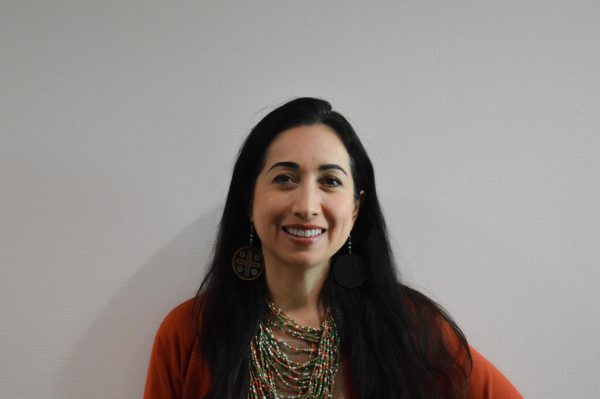Identifying the signs of eating disorders and illnesses
Many are battling within when it comes to eating disorders and illnesses but are unable to seek help because they feel trapped within the idea of their own self image.
Dr. Patricia Pitts, founder and former sufferer of anorexia and bulimia, created The Bella Vita, a program that focuses on giving the support their patients need, the tools to identify themselves and ultimately put the power back into the patient. Pitts begins by explaining the signs that a suffer displays.
“The are general signs, constantly thinking about food, weight and appearance. Being very upset over weight changes or if a person misses a workout,” Pitts said. “Restricting food intake, skipping meals, cutting out some entire food groups or even eating only low calorie and low carb foods.”
There are many factors that can trigger these illnesses to arise within a person that can either be internal or external, having to deal with their emotional state or the environment that surrounds them.
“There are basic underline psychological issues that are all in the literature, low self esteem, depression, anxiety difficulties with interpersonal relationships, or physical emotional or sexual trauma,” Dr. Pitts said.
Dr. Pitts also mentions what she calls the “biocycle social spiritual model” that deals with different dynamics of genetics, psychological, and cultural and social relationships, that can affect a person.
Dr. Pitts adds there is a “high influence in the media, especially in Southern California and certain age groups. In order to fit in and be liked by the opposite sex, to be seen in a positive light” or to be taken seriously a person must think or look a certain way.
“There is a huge pressure in Hollywood to be thin. To be thin is to be valuable,” Dr. Pitts said.
Another factor that could possibly cause an eating disorder is how a person communicates with others around them. It can arise from the difficulties of connecting and communicating with others in such a way that a person finds comfort in food.
“If I’m eating I don’t have to go out and socialize it becomes a way of creating a relationship with someone that doesn’t talk back to you, that’s always there, that comforts you,” Dr. Pitts said. “But it numbs you out too. It’s an illusion, it’s not doing the job but it is in the moment.”
Another challenge that the sufferer and the people that surround them must face is how to approach the issue.
An EC student describes her experience when she noticed someone she knew was suffering from eating disorders. Jennifer Regamit, 20, health care administration major said that she knew someone who suffered from anorexia and bulimia but at the time did not really understand what the signs meant.
“I knew the signs but I was just too young to understand,” Regamit said. “She had insecurities about her weight when I thought she looked great.”
Regamit adds that another sign she noticed was how the female would avoid eating her entire meal but rather find ways to create an illusion of eating everything on her plate.
“She used to take a lot of breaks and shuffle her food around,” Regamit said.
If she had understood what these signs had meant, Regamit said that she would have “gently tried to address the subject” without using any aggressive means as to not scare the female away but rather display her willingness to provide help.
In order to approach the issues with a sufferer of any of these illnesses it is important to show them that you are willing to help and listen to what they have to say.
“It’s nice when you already have a relationship with that person, when that person already knows on some level that you really care about them,” Pitts said. “This encourages more of an open communication.”
Pitts adds, another way to get the sufferer to open up about their problems is to use “I statements”, “I feel sad when you do such thing” will show the sufferer what the person close to them feels and experiences without placing judgment.
This topic is very important to Pitts as she has formerly battled with history of anorexia as well as binging and starving.
“I have a personal history of anorexia when I was 11 to 15 and I was binging and starving into my early 20s,” Dr. Pitts said. I had a lot of depression and anxiety. I was very introverted and I was trying to reach out and connect but I didn’t know how to do so.”
Although many may feel they have no outlet, no one to speak to and no one who will understand them and their personal issue, this isn’t the case.
“There is always hope, there is no question in my mind. I’ve seen over the years, working with thousands and thousand of patients,” Dr. Pitts said. “I’ve seen some people who come in so hopeless, look like they’ve had so many things going on but there was no hope but I’ve seen those people get well and move on. Have a life and get their careers going and get married and have children.”
Over the past 30 years Dr. Pitts says that she has seen so much growth and change in people that have battled with these internal struggles because they were willing and able to do the work it took to change.
If a student feels that he or she is in need to help or if someone knows of another battling with these issues Dr. Pitts encourages the student to visit their website www.thebellavita.com or call the 24/7 hour hope line at 818-585-1775.
Looking for support on campus can be found in the Health Center or by visiting any of the three psychologists on campus.
Jane Schaeffer, clinical psychologist, said that part of the problem with these illnesses is that the sufferer will not want to speak about their being bulimic for example, out of fear that the person they tell will stop them. But there is help for those who seek it and wish to better their situation.
“A student can speak to a nurse practitioner to learn about dieting, healthy dieting,” Schaeffer said. “The psychologists are here to speak with about the emotional aspects.”










